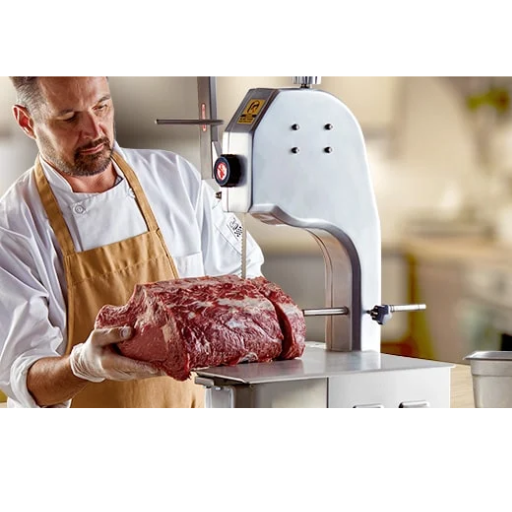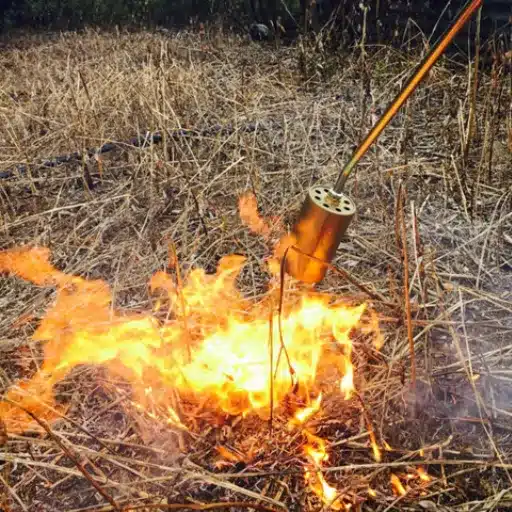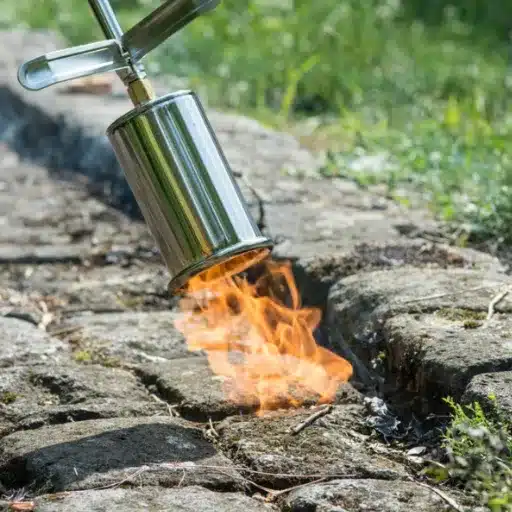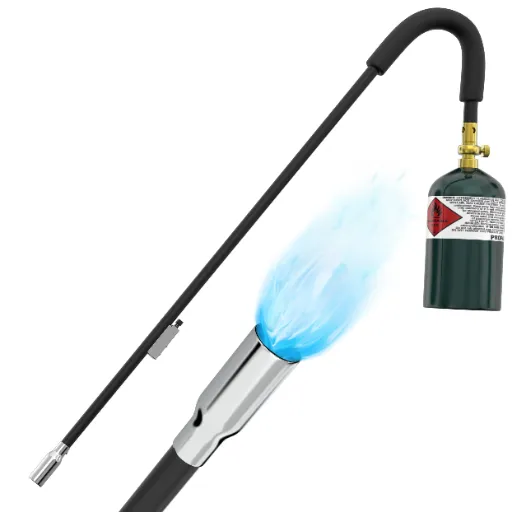Step into the space, where we have previously discussed various machines and devices in the category of meat processing. It is not important whether you are a master butcher trying to hone his skills or a chef who is eager to understand the technologies involved in the creation of his favorite meat cuts; this article will be useful for you. This time we are going to examine processes, tools and machines which are aimed for meat processing, when it should be fast and efficient but at the same time safe. We will assist you in determining what tools and equipment are appropriate for such specific needs ranging from basic hand tools such as knives and cleavers to more advanced tools such as grinders and slicers.
What are the Essential Meat Processing Equipment for a Butcher Shop?

In the case of establishing a butcher shops, there is meat processing equipment that is necessary for effectiveness and quality. To begin with, it is impossible to neglect the need for good quality knives and cleavers, which are needed for cutting and trimming. A strong table which is designated for cutting must be present so as to ensure that the meat is processed on a clean surface. Grinders help to reduce chunks of meat into smaller pieces while slicers ensure that the pieces are thin slices of uniform dimensions. Sausage stuffers are important in making sausage at home and vacuum bags are indispensable in storing meat. Bandsaws are also beneficial in slicing bones and large pieces of meat efficiently. All these items have been outlined as being very important in the smooth running of a butcher shop.
Understanding the Role of Meat Grinders in Processing Meat
Meat grinders are a vital component in the meat processing industry, offering versatility and efficiency to butchers and meat enthusiasts alike. These machines allow for the transformation of whole cuts or trimmings into ground products, such as hamburger patties, sausages, and meatloaves. High-quality grinders ensure uniform texture and consistency, crucial for both taste and presentation in culinary creations. Typically, they come with various grinding plates, enabling different levels of coarseness depending on the desired output. Additionally, modern meat grinders are designed with hygiene in mind, featuring easily removable parts for thorough cleaning and maintenance. With electric models, the labor-intensive task of hand grinding is minimized, increasing productivity and allowing for larger batches. Whether in a butcher shop or a home kitchen, meat grinders contribute significantly to the quality and efficiency of meat processing.
How Slicers Enhance Meat Preparation
As a meat enthusiast, I find that slicers are indispensable tools for achieving precision and consistency in meat preparation .With adjustable blade settings, I can easily customize the thickness of slices to suit various recipes, be it paper-thin slices for deli meats or thicker cuts for hearty roasts. The efficiency of slicers significantly reduces preparation time, allowing me to focus more on seasoning and cooking. Additionally, many modern slicers are designed with safety features and are easy to clean, which adds to their convenience. Utilizing a slicer in my kitchen not only enhances the quality of my dishes but also elevates the overall culinary experience.
The Importance of Butcher Supplies in a Professional Setting
Butcher supplies play a critical role in a professional setting by ensuring efficiency, safety, and superior quality in meat processing.Equipment such as meat grinders and slicers help streamline processes, reducing manual effort and improving output consistency. Additionally, safety gear like gloves and aprons is crucial in protecting workers from potential injuries. The availability of vacuum sealers and proper storage solutions further maintains meat freshness and prevents spoilage, ultimately impacting customer satisfaction and business profitability. Investing in robust and reliable butcher supplies ensures that professional establishments can deliver excellence with every cut, enhancing both operational effectiveness and product quality.
How to Choose the Right Sausage Stuffer for Your Needs?

Choosing the right sausage stuffer for your needs requires consideration of several key factors. First, assess the volume of sausage production you anticipate, whether it’s for small batches or larger-scale production, as this will determine whether a manual or electric stuffer is more suitable. Next, consider the material of the stuffer; stainless steel options are durable and easy to clean, ideal for frequent use. Pay attention to the stuffer’s capacity and compatibility with different casing sizes, which will affect its versatility in your operations. Ease of use and maintenance should also influence your decision—look for models with straightforward assembly and disassembly. Lastly, set a budget that balances cost with the quality and features you need, ensuring you get the best value for your investment. By evaluating these aspects, you can select a sausage stuffer that aligns with your requirements and enhances your culinary processes.
Comparing Manual Meat and Electric Meat Options
When choosing between manual and electric meat options, I found that manual meat grinders are typically more affordable and portable, making them ideal for small-scale operations or home use. They also provide greater control over the grinding process, as they require manual labor to operate. However, these units can be labor-intensive, especially for processing large quantities of meat.
On the other hand, electric meat grinders offer efficiency and convenience, suitable for larger batches or frequent use in professional settings. They quickly handle high volumes with minimal effort, though they tend to be more expensive and require access to an electrical outlet. Additionally, electric models often come with multiple attachments and settings, enhancing their versatility for various meat processing tasks.
Ultimately, my decision hinges on weighing the cost, volume, and convenience needs against the practicality and scale of my operations.
What Makes a High-quality Meat Stuffer?
When determining what makes a high-quality meat stuffer, several factors should be evaluated. Firstly, the material used in construction is crucial—stainless steel and heavy-duty plastic are recommended for their durability and ease of cleaning. The stuffer’s capacity should match your processing needs, with larger models benefiting those who handle significant quantities of meat. An efficient design that ensures smooth operation is essential; look for features like ergonomic cranks on manual models or powerful motors in electric versions. Versatility is enhanced with multiple nozzle sizes, allowing for various sausage types and thicknesses. Additionally, consider the ease of disassembly and maintenance, as these will affect the stuffer’s longevity and usability. Finally, choosing a reputable brand with positive reviews can provide peace of mind regarding quality and performance.
Top Features to Look for in Sausage Stuffer
First and foremost, strength is the most paramount; therefore I tend to prefer stuffers which are made from stainless steel or plastic which is of high quality and can stand up to bodhar usage but still remain easy to clean. Volume is yet another fundamental factor – be it personal or commercial, there is no other means other than having the stuffer intended for the level of usage that I intend to have. I also consider the features of manual models to have adequate ergonomics or electric models to have an efficient enough motor to improve their ease of use and performance. One thing that I appreciate a lot is the interchangeable head for the nozzle since; it is impossible to make sausages which are of different style and size otherwise. Lastly, users’ ease of maintenance is also taken into account – only the ones that can be easily disassembled for cleaning purposes and which come from well known manufacturers whose machines have good reviews of efficiency and dependability do I consider.
When evaluating sausage stuffers, several key features and technical parameters can guide you toward a high-quality purchase
Looking at other sausage stuffers review them critically and look for other features some are quite prominent while other are more technical which will help you in deciding which is best suited for your purposes:
Material and Durability: Sausage stuffers which are constructed using stainless steel or plastic with heavy duty application can resist corrosion and make maintaining them easier.
Capacity: By selecting the correct sausage stuffer capacity it is possible for users to select stuffer which is suitable for their requirements. Those who produce small batch meat can select the 5 to 10lbs capacity but those with bigger production may need approximately 15 lbs or more custom stuffer.
Design and Operation: Whether the fixture is handheld device or an electric masher, machines have to be easy to operate, everybody wants that. When purchasing manual models the crank should be selected based on comfort and when purchasing electric stuffing machines no less than 0.2 hp is recommended.
Nozzle Sizes: An array of different sizes and shapes of sausages can be created with nozzle attachments, these can range from 10mm up to 30mm in size.
Ease of Disassembly and Maintenance: Sausage stuffer units are disassembled fairly easily making the units easy to clean, enhancing safety factors and also increasing the lifespan of the stuffer.
Brand and Reviews: There should be a good degree of freedom in customer purchasing since it would be purchasing good brands with good products and reviews.
Why is a Meat Tenderizer Important in Food Preparation?

A meat tenderizer is an essential gadget in the kitchen, as it helps cut quality meat. The process of tenderizing meat entails the breakdown of the tough and fibrous connective tissues present within the muscle meat, making the chewing and swallowing of the muscle meat easier. The experience of consuming the meat does improve since there is an increased possibility of making marinades or other spicy sauces that need to be soaked deep inside the meat to enhance the flavor. Also, since the meat was tenderized, it can be done well and quickly without the meat losing its juice and/or flavor. In this sense, the type of tool used – whether a mallet or some tendon enzyme or some mechanical and enzyme-containing devices does not matter. From ancient times, omelet has served as the decoration of meat products, an omelet that has been decorated with parsley.
Different Types of Tenderizers and Their Uses
In terms of how I tend to the meat in my kitchen, there are three categories of tenderizers that I tend to gravitate towards. First off, there is my trusty mallet tenderizer, which is a tool that permits me to select the meat of my desire and physically strike it with force until I have achieved the texture that I wanted. A memorable instance is when I had to employ this on the chicken breast and beef steaks so that they could cook more evenly.
The second is an enzyme-based tenderizer which transcends my expectations. Enzyme-based types utilize bromelain from pineapples or papain from papayas to soften the meat. I have to warn you though, there is a catch: they require marinating meat for some time to allow the enzymes to work on tougher cuts of meat like brisket and round steak. They’re great when marinating and cutting meat leaves some trace of extra time.
Finally, I can’t forget about the mechanical ones which are a work of art. I say this because they’re so good at making the meat tender; their blades or needles pokes it and affects the fibers creating small gaps. For sure, larger cuts of steaks or meat would require these as they don’t marinate easily and hence can be used to fathomably expand the tenderizing process. It’s safe to say that such methods bring a new flavor profile or texture on what I’m about to cook.
How Meat Tenderizers Improve Meat Texture
Meat tenderizers have been proven to transform the texture of meat considerably and this transformation comes about due to the alteration of the fibrous structure of the proteins. As tenderizers soften the meat, they also relax the connective tissues and muscle fibers, which makes for better and tastier cuts of meat. Mechanical means such as a mallet or a mechanical tenderizer on the cut of meat serve to break the integrity of the cartilage and meat to allow the meat cook and absorb moisture evenly and more thoroughly. Additionally, enzymatic based tenderizers containing bromelain and papain, may take the tougher parts of meat and when left to marinate without restriction in time, which can last from 15 minutes to a few hours depending on type of meat, reduce it to significantly easier to use parts as they work best when a temperature of between 50-80 degrees Celsius. Such enzymatic activity effectively hydrolyzes bonds in collagen proteins and results in smooth and creamy textures which are otherwise difficult to create due to the limitations posed by conventional cooking techniques. In the end, these tenderizing techniques ensure that regardless of how tough the cuts are, they will satisfactorily soften and become more palatable, increasing the overall satisfaction of consumers.
References
-
Niche Meat Processing: Offers videos and advice from processors about their favorite equipment.
-
USDA Meat and Poultry Supply Chain: Provides insights into the meat and poultry supply chain, which can be useful for understanding equipment needs.
-
Smoking Meat Forums: A community forum where users share recommendations and experiences with different equipment.
Frequently Asked Questions (FAQ)
Q: What are the essential types of meat processing equipment for a butcher shop?
A: Essential types of meat processing equipment for a butcher shop include a meat slicer, meat choppers, meat mixers, electric meat grinder, and meat saws. These tools help in efficiently processing various portions of meat for different products.
Q: How does a meat slicer enhance the deli section of a butcher shop?
A: A meat slicer allows for consistent and precise slicing of meats and cheeses, which is crucial in the deli section for preparing deli-style meats. It ensures uniformity in thickness, enhancing the presentation and quality of servings.
Q: Why is an electric meat grinder a must-have in meat processing?
A: An electric meat grinder is a must-have because it efficiently grinds meat into desired textures for products like burgers, sausages, and ground meat. It speeds up the process and ensures hygiene and consistency, which are vital in commercial meat processing equipment.
Q: What should I consider when choosing meat saws for processing meat and bone?
A: When choosing meat saws for processing meat and bone, consider factors like power, blade quality, ease of cleaning, and durability. It’s important to select high-quality meat processing equipment to ensure efficient and safe cutting operations.
Q: How do meat mixers contribute to the sausage making process?
A: Meat mixers are crucial in the sausage making process as they evenly blend ground meat with seasonings and other ingredients. This ensures a consistent flavor and texture throughout the sausage, which is vital for high-quality products.
Q: Are there benefits to using used meat processing equipment?
A: Yes, used meat processing equipment can be cost-effective, especially for start-ups or smaller operations. It’s important to ensure that the equipment is well-maintained and from reliable manufacturers to guarantee performance and safety.
Q: What role does meat packaging play in meat processing?
A: Meat packaging plays a critical role in preserving the freshness and quality of meat products. It protects against contamination and spoilage, extends shelf life, and enhances the presentation of the product for retail.
Q: How can LEM products enhance the processing of jerky and other meat snacks?
A: LEM products offer a selection of meat processing equipment and supplies that are ideal for making jerky and other meat snacks. Their equipment ensures efficient processing, consistent quality, and ease of use for enthusiasts and professionals alike.
Q: What are the advantages of using top-quality, duty meat processing equipment?
A: Using top-quality, duty meat processing equipment ensures longevity, efficiency, and safety during meat processing operations. It reduces downtime and maintenance needs, making it a valuable investment for high-volume production environments.









